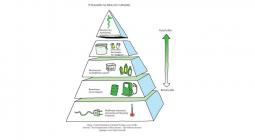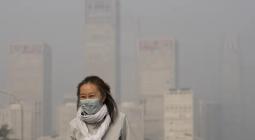How Bioenergy Causes Air Pollution: The Dark Side of Renewable Energy

Bioenergy is often seen as a more environmentally-friendly alternative to other forms of energy generation. But the truth is that it can actually be quite harmful to the environment. Bioenergy has a dark side: It contributes to air pollution.
Biomass, or bioenergy, creates energy by burning living materials like plants and trees. The wood pellet industry uses trees to make wood pellets. It then ships them to Europe and Asia and burns them in power plants to create electricity. Wood pellet plants are as dirty and problematic as coal plants.
Fossil fuel combustion in coal plants is the most common way that we produce electricity. But fossil fuels are responsible for increasing greenhouse gasses in the atmosphere. Many countries have tried to pivot to renewable energy, but they’ve adopted bioenergy instead of truly low-carbon energies like wind and solar. This is mostly out of convenience because wood pellets can burn alongside fossil fuels like coal.
While many countries consider wood pellets “carbon neutral”, this is false. Greenhouse gas emissions from wood pellets—like carbon dioxide—are worse than coal. Europe and Asia are demanding wood pellets from the United States because it’s a “free pass” on their carbon accounting ledgers. But on the ground, burning biomass contributes to many air pollution impacts.
Traditional Biomass Burning Impacts
How do we know about the connection between biomass and air pollution? Biomass is most often used in developing countries to cook and heat the home. We’ve looked at indoor cooking smoke exposure to learn about the air pollution from burning wood. Before the 2010s, biomass was almost never used to generate household energy. Now the U.S. exports millions of tons of wood pellets every year to other countries despite the known health risks.
The household air pollution impacts from home wood burning are extensive. This domestic smoke pollution can cause:
- acute lower respiratory infections
- lung cancer (second only to smoking)
- decreased respiratory health
- exposure to carbon monoxide
- increased risk of pneumonia and other acute respiratory infections
- increased risk of COPD (chronic obstructive pulmonary disease)
Air pollution from biomass is common in homes that heat with wood. But the industrial production and combustion of wood pellets for electricity cause many of these same impacts.
How Is Air Pollution From Bioenergy Generated?
Making wood pellets creates a variety of pollutants, including particulates (fine dust), carbon monoxide, nitrogen, and other hazardous air pollutants (HAPs). To make wood pellets, the bioenergy industry dries and crushes wood, which releases a lot of dust—also known as particulate air pollution.
Crushing wood can release other air pollution, too. For example, wood naturally contains formaldehyde. When the wood breaks down, it releases formaldehyde as fine particulate matter. This process releases other harmful chemicals as well.
Chopping wood won’t release a lot of air pollutants. Repeatedly crushing wood with big machines will. This type of dust is full of particulate air pollution, including
- volatile organic compounds
- specific health-damaging air pollutants like formaldehyde
- fine particulate air pollution (PM 2.5 and below)
Wood pellet plants’ air permit applications usually list these air pollutants. Unfortunately, air permit applications are challenging to read. They can contain nearly a hundred pages of details.
Wood pellets also create particulate matter air pollution when they’re made. Biomass burning creates additional pollutants, too. This ambient air pollution in the destination countries is also an issue. Biomass smoke can release many of the same compounds described above. It also releases carbon dioxide, a potent greenhouse gas that fossil fuels also produce. You can see this outdoor air pollution in pictures of the Drax power station. You can see it in other bioenergy power stations all around the world.
Beyond the air pollution impacts, we also need to consider the residues after combustion. When wood pellets are burned alone, there’s evidence that the ashes contain significant heavy metals. These are a risk when considering disposal methods. When wood pellets are cofired with coal, it’s even worse. The combined ashes contain risks from both coal ash and wood ash.
We’re only now beginning to understand the public health risks of burning biomass.
Health Effects of Outdoor and Indoor Air Pollution
Pollutants like these cause many health problems. Fine dust, called PM2.5, is especially harmful. PM2.5 can get into the lungs and bloodstream. PM2.5 can hurt lung function, worsen asthma, and cause heart attacks and premature death:
- Particulate matter harms boys and children with high BMI even more than other children.
- Particular matter can cause airway inflammation, especially in asthmatic children.
- Particulate matter affects people more strongly in combination with higher temperatures.
- It can even harm folks with asthma and COPD (chronic obstructive pulmonary disease).
- PM2.5 was correlated with an increase in the risk of death from COVID-19.
- Air pollution also contributes to cardiovascular disease.
Pellet production plants also release volatile organic compounds (VOCs). The US Environmental Protection Agency (EPA) calls some VOCs hazardous air pollutants (HAPs). This includes chemicals like acetaldehyde, formaldehyde, and methanol. HAPs are chemicals that are toxic or can cause cancer, even in small amounts. VOCs and HAPs cause health problems for children, the elderly, and people with asthma or COPD:
- VOCs that make it indoors can harm lung function.
- Folks exposed to organic solvents like formaldehyde frequently complain of respiratory symptoms.
- Female woodworkers may be more susceptible to wood dust exposure.
- Increased exposure to HAPs is associated with a 9% increase in COVID-19 deaths.
People living next to pellet plants often have a lower life expectancy and poorer health. According to the American Heart Association, “Short-term exposure to small particulate matter can trigger cardiovascular disease mortality and illness; long-term exposure reduces life expectancy up to a few years.”
What You Can Do About Air Pollution
Living in dirty air is hard and dangerous. If you live near one of these facilities, there are some things you can do:
- Educate yourself and your community about the dangers of air pollution. You can use this downloadable fact sheet to help.
- Monitor local air quality data to protect yourself on bad air days.
- Install an air monitor on your property
If you have the privilege of not living next to a wood pellet plant or other biomass facility, consider yourself lucky, and get involved in the movement.
Source: Independent Media Institute
Credit Line: This article was produced by Earth | Food | Life, a project of the Independent Media Institute.This article was produced by Earth | Food | Life, a project of the Independent Media Institute.
Author Bio: Sam Davis is a conservation scientist with Dogwood Alliance who works at the intersection of forests, climate, and justice.Sam Davis is a conservation scientist with Dogwood Alliance who works at the intersection of forests, climate, and justice.
cover photo: counterpunch.org




